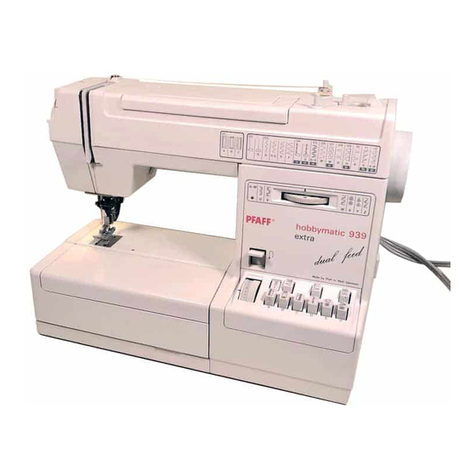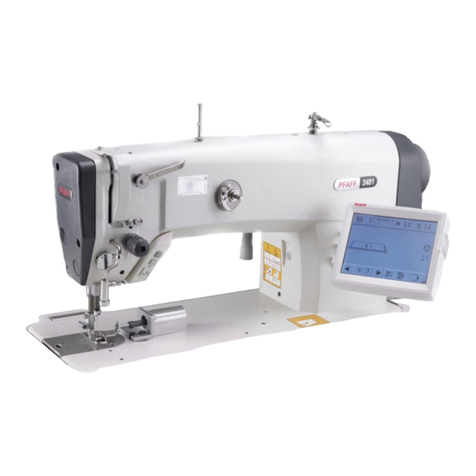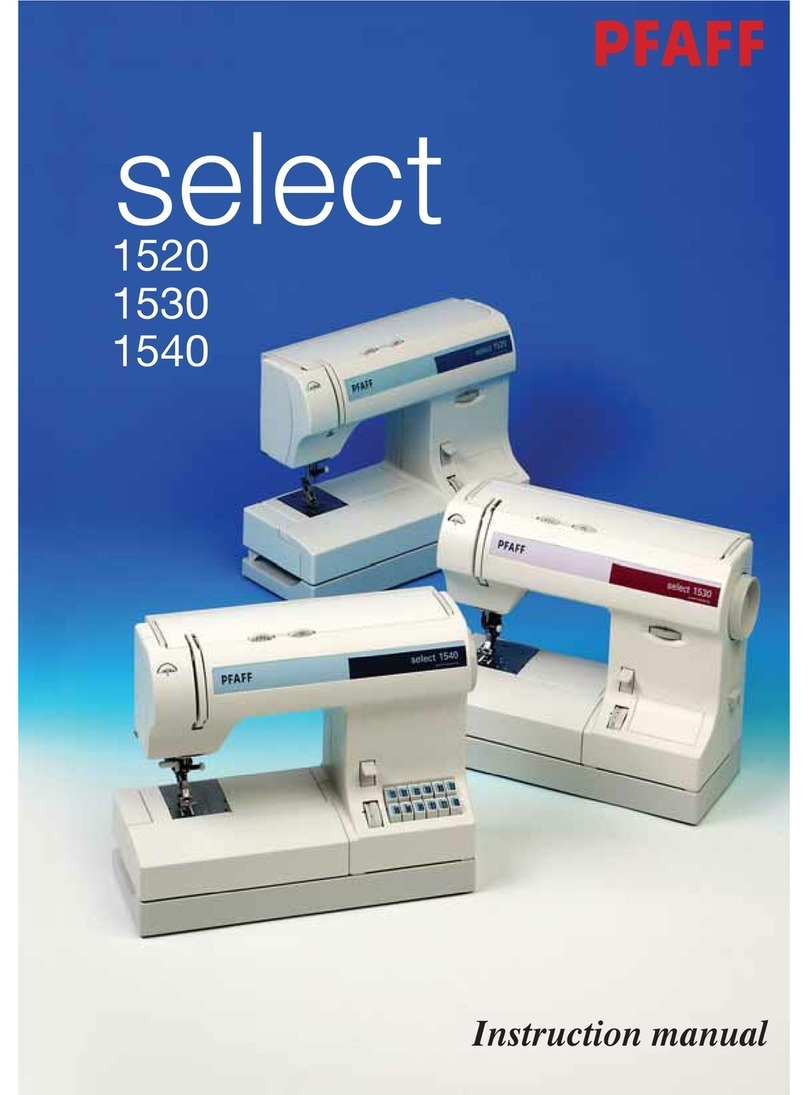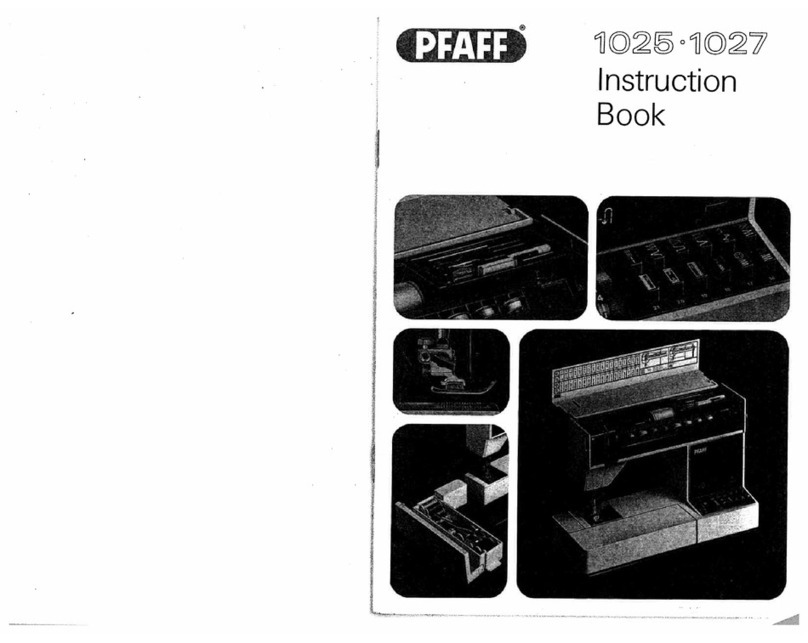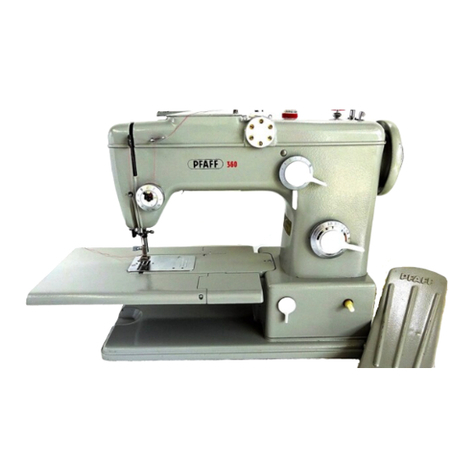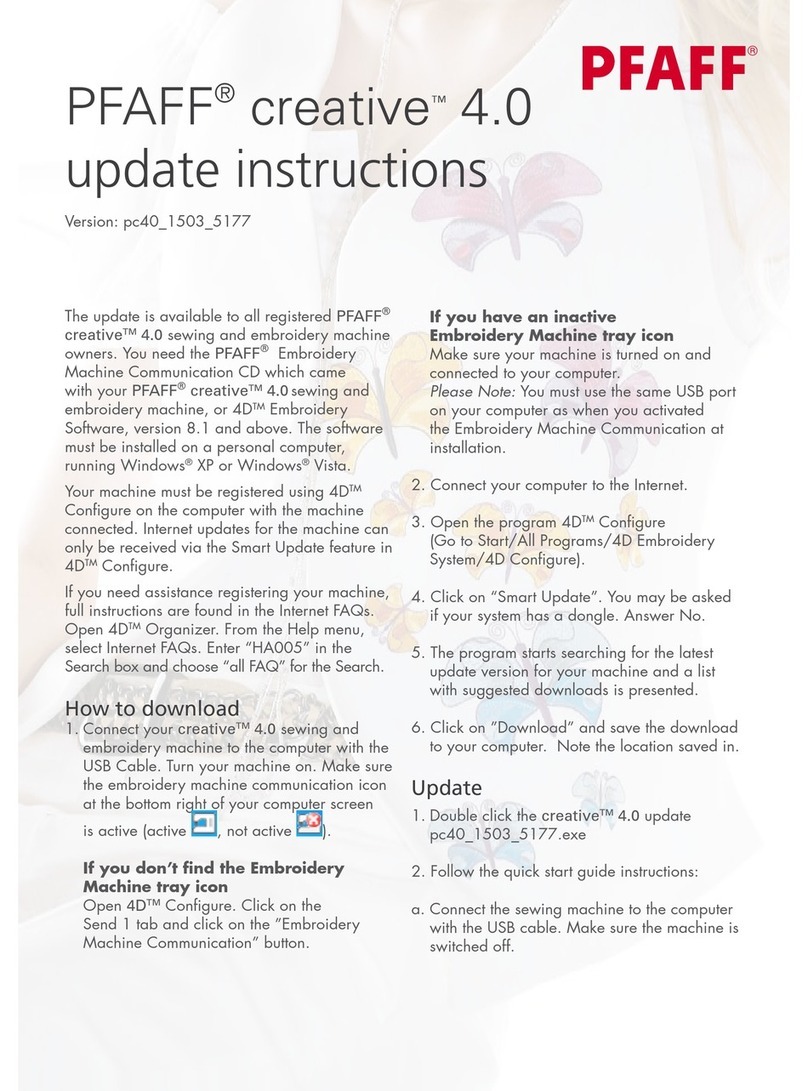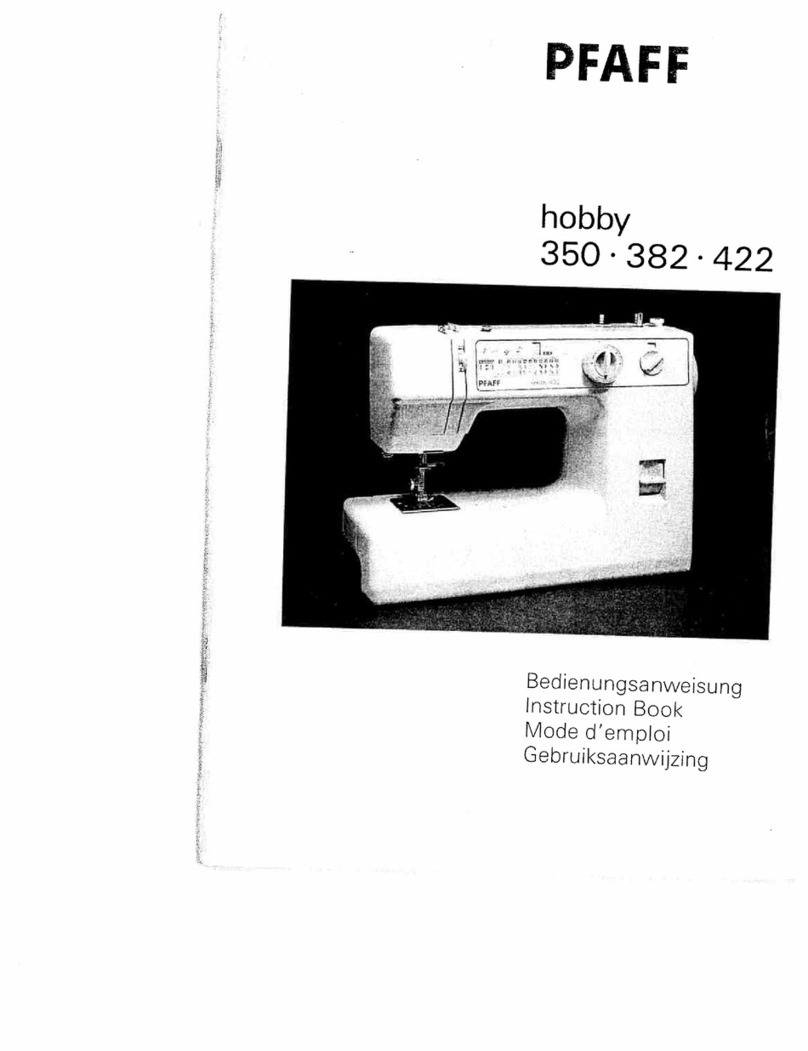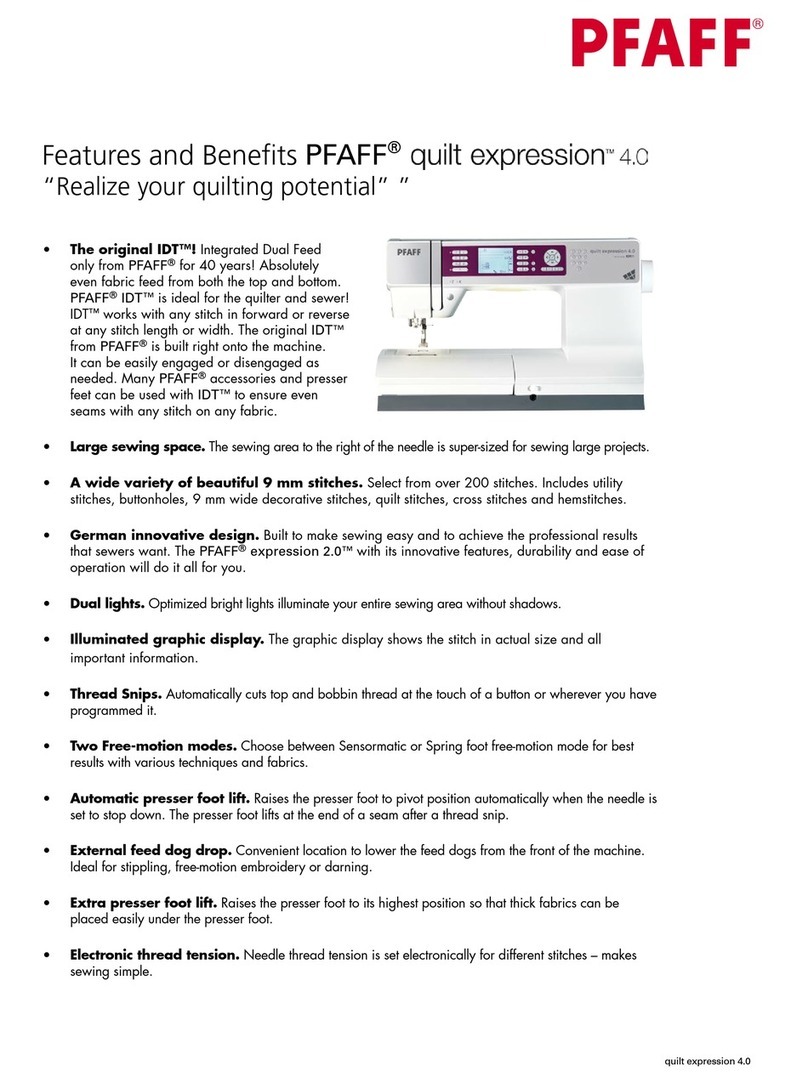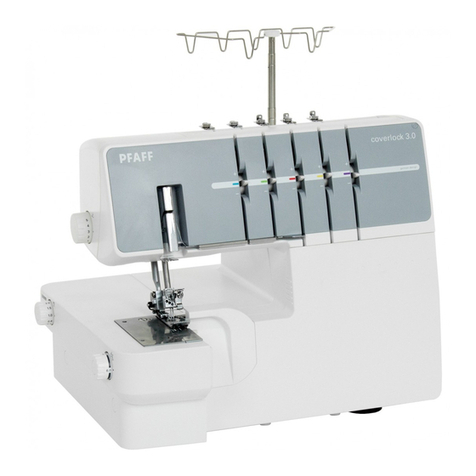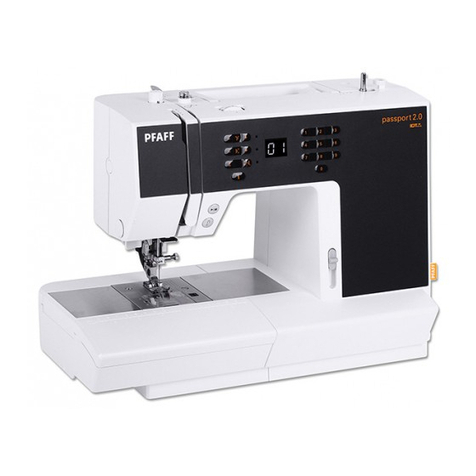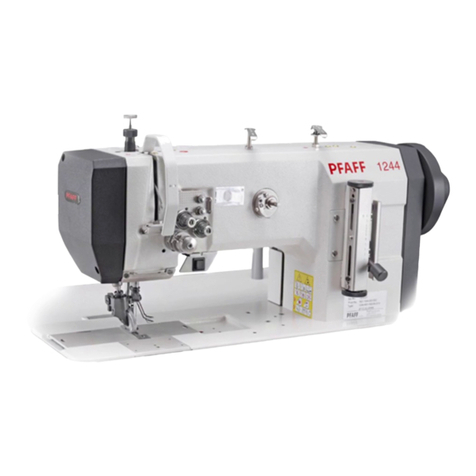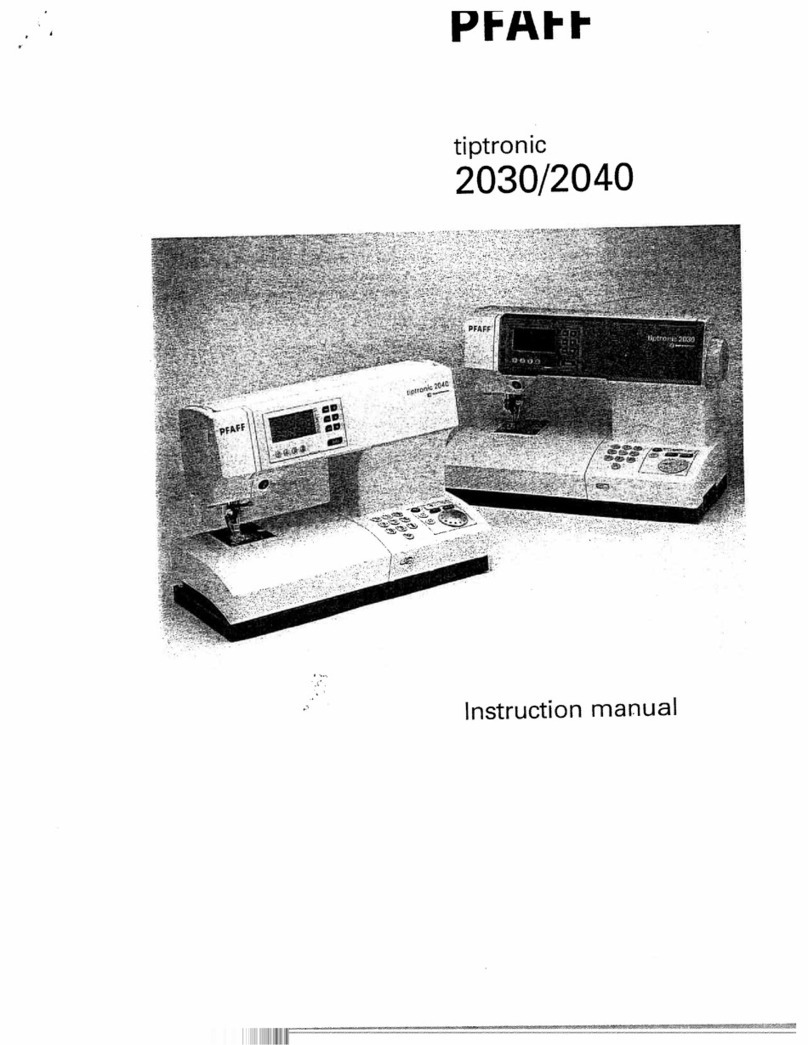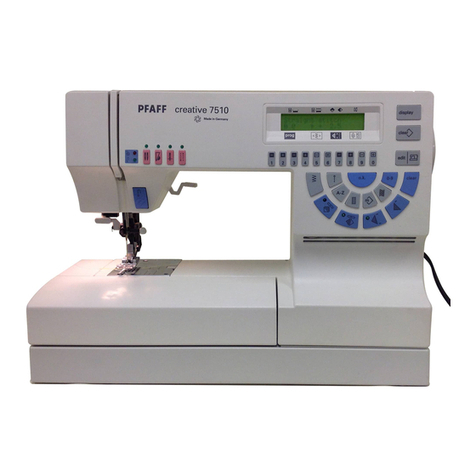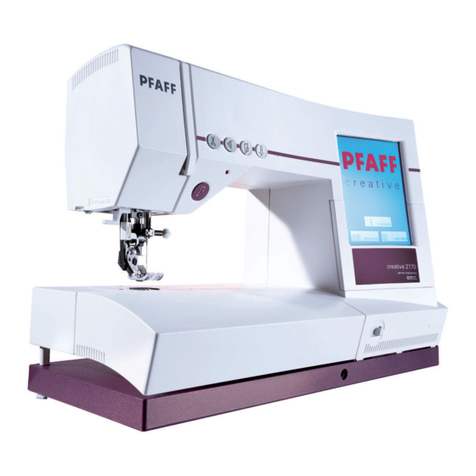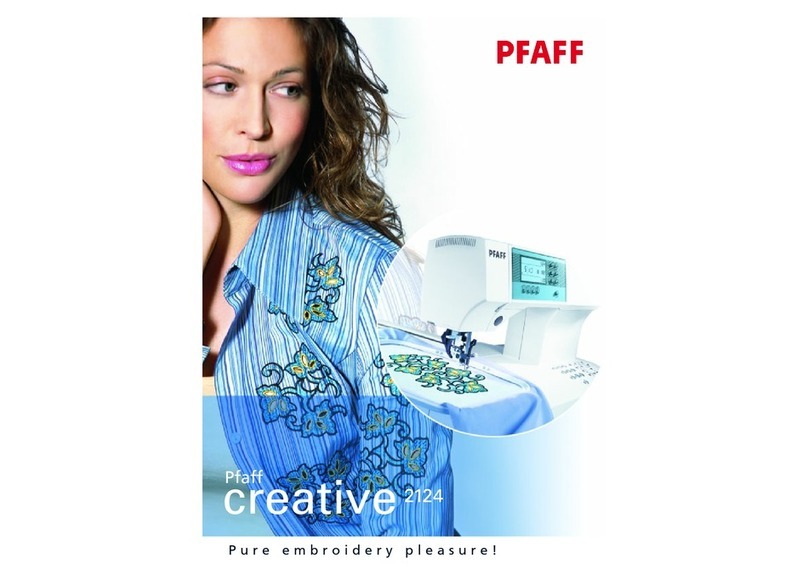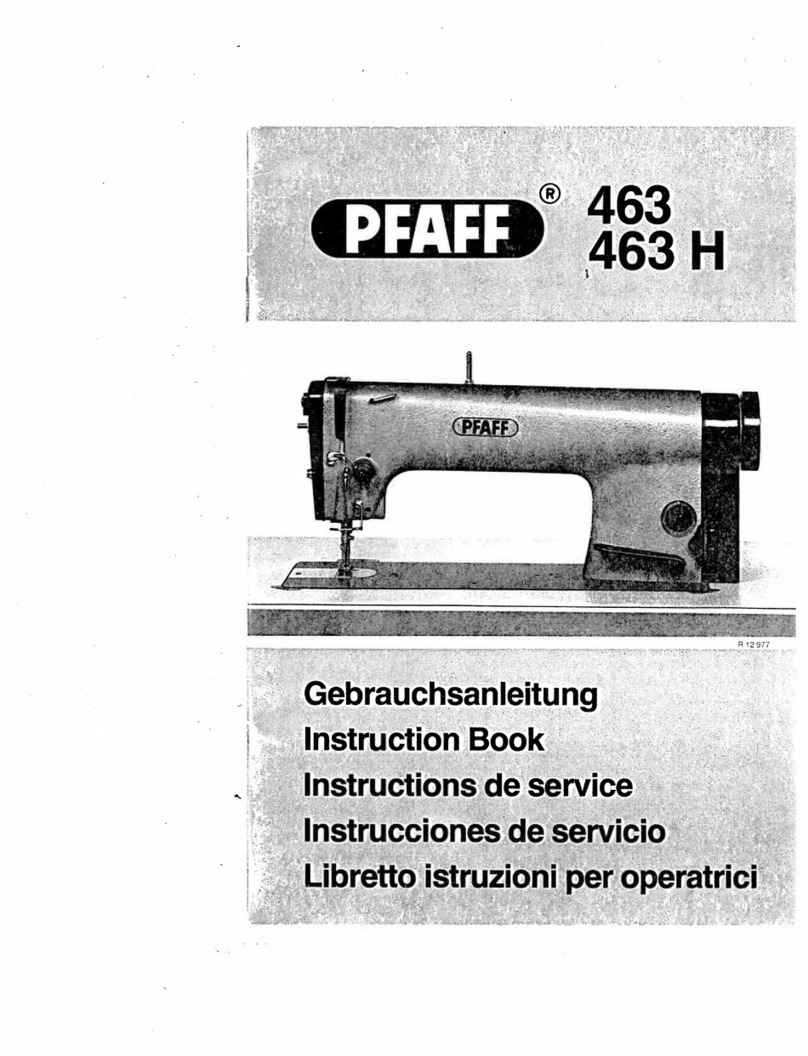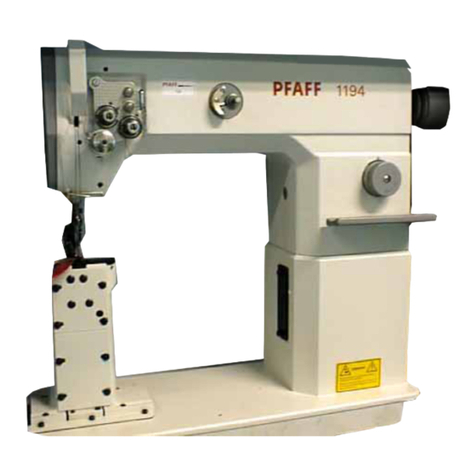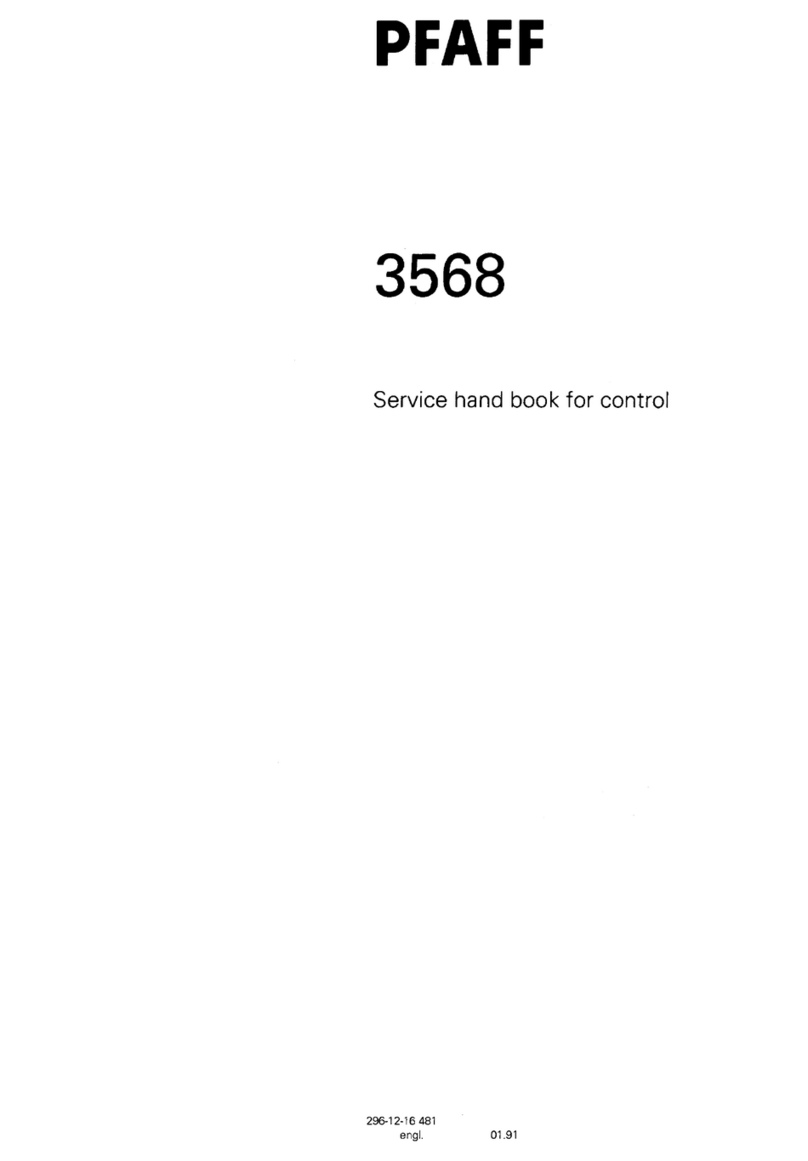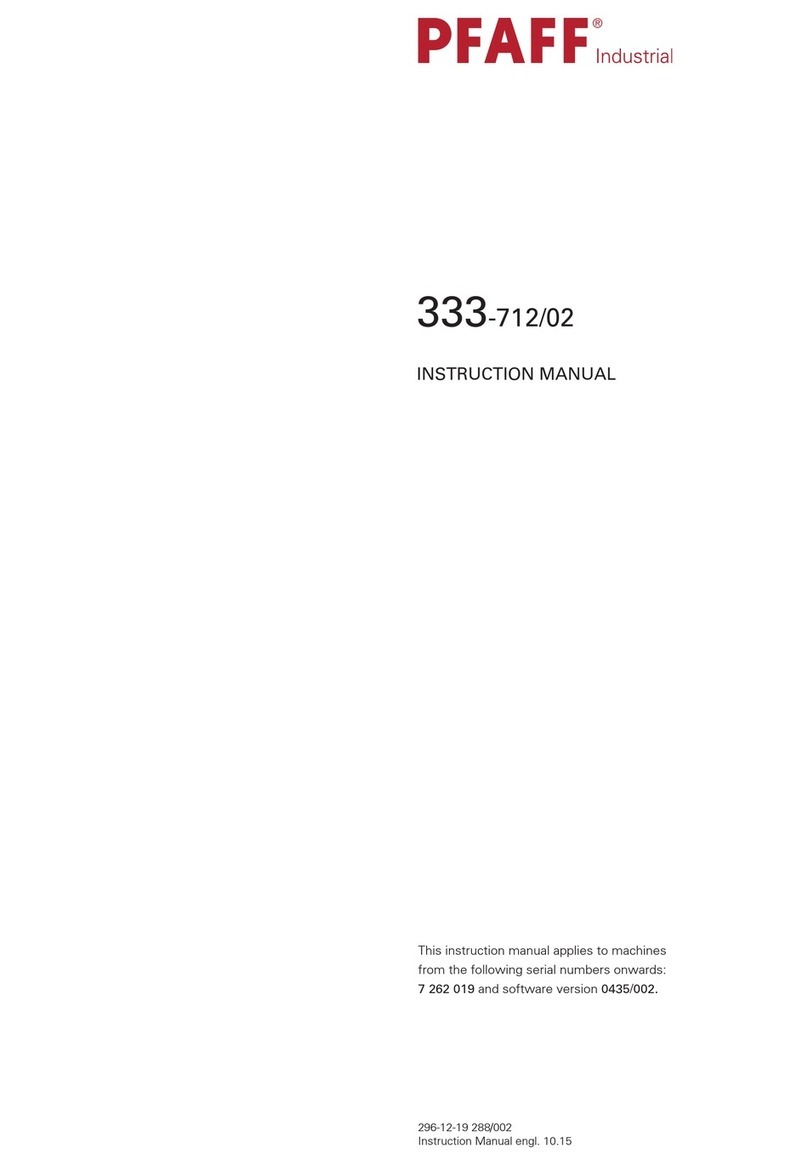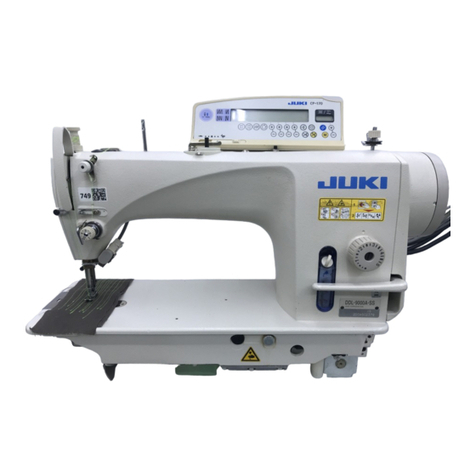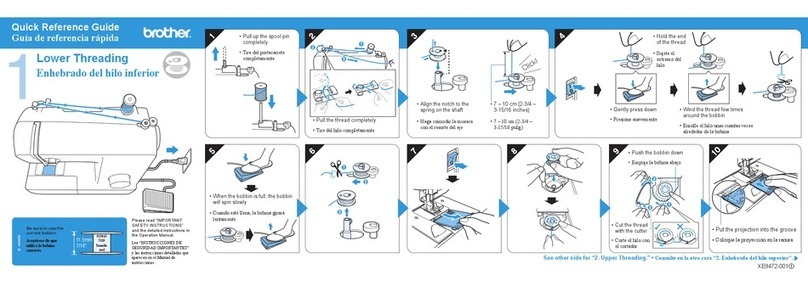
Notes
on
safe
machine
operation:
The machine must only be usedforthe purpose It
has
been designed for.
When
converting Itto anotherversion, all valid safety rules
must
be
followed.
Service and repair workmust only be performed by qualifiedpersaonel.
Workon liveparts Is not permitted, apart fromexceptions according to
DIN
57105
and VDE0105.
Service manual
418,438,838
appliesto the following versions:
418 438
838
418-716/.. 438-716/..
838-716/..
For
the
adjustment of automatic fancy-stltch
mechanism
-718/01
and
thread trimmer -900/..
there
are
separate
manuals.
Important
note
Donot use a C-clamp on the needlebar of Pfaff
418,438
and
838 machines
as
thiswoulddamage
Its special coating. Make
sure
you
check
the
hook lubrication
system
(see
Section 27) on ma
chinesInoperationforthe firsttime or which
have
been
Idlefor a longer period (I.e.1 or 2 months).
For shipping
purposes
the
oilis drained from
the
needle
vibrating eccentrichousing of the
Raff
418,438
and
838. ItIstherefore
necessary
to
fill
this housing with 75 c.c. of oil
(see
Section26) before operating
the
machine
for
the
first
time.
A
sticker
on
the
machine
arm
serves
as
a
reminder.
When the machine Isgiven a general overhaul put about2c.c. of piniongrease, witha dripping point of
160°C, in the bevel-gear
case
of the hook. We recommend you use Molykote-Longtherm 00. This
grease
can
be
obtained
from us
under
No. 280-1-120 199.
Tools,
gauges
and
other
accessories
required
for
adjusting
the
machines
1
set
of
screwdrivers
with
2
to
10
mm
wide
blades
1
set
of alien
keys
from 1.5 to 6 mm
1
set
of
wrenches
with
openings
from 7 to 14 mm wide
1wrench with 27-mm-wlde
opening
1
metal
ruler
1 cylindrical pin (5 mm dia.), No. 13-030 341-05
1
feed
dog
gauge,
No. 91-129
995-05
1 hook bearing bracket
gauge.
No. 91-129
996-05
1
wrapper
of
system
438
needles
2
strips
of white
paper
1 rollof
adhesive
tape
Sewing
thread
and
testing
material
From the library of Superior Sewing Machine & Supply LLC - www.supsew.com
